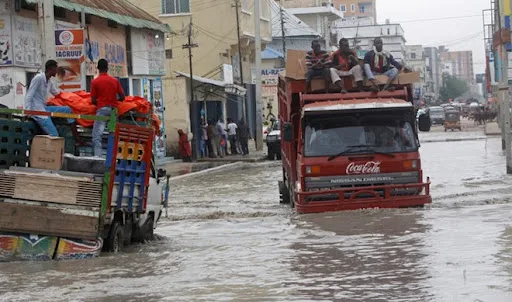The Unrelenting Rainfall:
Since the beginning of the month, Somalia has been pummeled by relentless downpours, attributed to the meteorological phenomena known as El Nino. The consequence has been widespread flooding, inundating homes and submerging crops, compounding the woes of a nation already on the brink of starvation due to a prolonged drought.
Humanitarian Crisis Unfolds:
Information Minister Daud Aweis disclosed that half a million people have fled their homes due to the flooding, and an additional 1.2 million people are at risk of being affected. With the death toll confirmed at 31 individuals, Aweis warned that the actual number could be higher. The seasonal Shabelle River, overflowing its banks, has been a major contributor to the destruction, particularly in the Gedo and Hiran regions.
Climate Change and Conflict:
Somalia, among the countries most vulnerable to climate change, faces the crisis unprepared as it contends with a violent Islamist insurgency. The delicate balance between addressing the immediate needs of the population and navigating the complexities of internal conflict further exacerbates the challenges faced by the government.
UN Warning and Climatic Interactions:
Last week, the UN Office for the Coordination of Humanitarian Affairs (OCHA) cautioned that 1.6 million people might be affected by what it described as "once-in-a-century flooding." The situation is compounded by the interaction of two climatic phenomena – El Nino and the Indian Ocean Dipole. This climate system, characterized by differences in sea surface temperature, amplifies the impacts of El Nino, leading to heightened risks of drought and increased precipitation.
Historical Context:
The article briefly explores past instances of flooding in Somalia, including the devastating floods triggered by El Nino in 1997-1998, which claimed over 1,800 lives. It also touches on the floods in 2006 and the more recent rainfall-induced crises in late 2019.
Conclusion:
As Somalia grapples with the immediate aftermath of flooding and the ongoing challenges posed by drought and conflict, it calls for a coordinated international response. The blog underscores the urgent need for humanitarian aid, the complexities of managing climate-induced crises in conflict zones, and the importance of addressing the long-term impacts of climate change on vulnerable nations.





Comments
Post a Comment